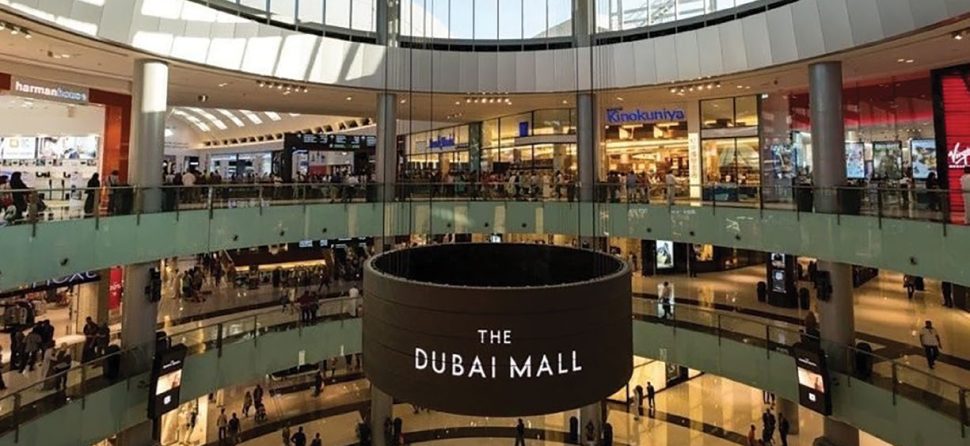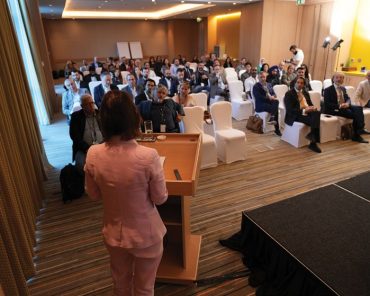The MENA Licensing Market
By Adeeb Alghoufary
The MENA Licensing Market
The Middle East and North Africa (MENA) form a geopolitical region that spans western Asia and northern Africa. The 21 MENA countries share significant cultural similarities. Their economies are experiencing strong growth, which has reached 5.5% during 2022 and is projected to remain at 3.5% through 2023 according to the World Bank. The total population of the MENA region exceeds 580 million, accounting for approximately 7% of the world’s people. The region has 60% of the world’s oil reserves and 45% of its natural gas reserves, natural resources that have made countries such as Qatar, Kuwait, UAE, and Saudi Arabia among the richest in the world in terms of GDP per capita. Some 90% of the inhabitants of the region are Muslims. The population skews young, with around half of the citizens of the MENA countries being under the age of 24. Arabic, Turkish, Farsi, Hebrew, and Kurdish are the languages spoken most widely in these countries, along with English and French in some of them. When considering business entry strategies, it is useful to divide the MENA region into a few sub-regions: First – Gulf Cooperation Council (GCC) consisting of Bahrain, Kuwait, Oman, Qatar, Saudi Arabia, and the UAE; second – the Near East consisting of Egypt, Iraq, Jordan, Lebanon, and Syria; Third – North Africa consisting of Algeria, Libya, Morocco, and Tunisia. Three countries of MENA that are not grouped above, each should have specific strategy which are Iran, Israel, and Turkey. The aim here is to provide an overview of the consumer media and retail industries, both of which have an enormous influence on the licensing industry. The following points are of particular significance for assessing the products for a business in the region.
• The COVID-19 pandemic has had a devastating impact on entertainment, media, and retail revenues, to the point of altering patterns of consumption in the region. However, spending in these sectors began to recover in early 2022 with a successful COVID-19 vaccination campaign in the region. Overall, entertainment and media revenues are expected to increase by 3% in the region by 2024, well ahead of an expected 2% increase globally.
• The growing population, including large numbers of expatriates, is the primary factor driving the retail industry. Specifically, the region’s population is expected to increase at a compound annual growth rate (CAGR) of 1.9% from 2021 to 2026.
• A few GCC countries are becoming global centers for business and entertainment (especially sporting events), with international tourist arrivals anticipated to increase at a CAGR of 24.1% from 2021 to 2026 to US$83.4 billion.
• Digital entertainment—led by streaming video services such as Netflix, Shahid, and Starzplay along with gaming and digital music—is projected to grow at an accelerated pace into 2024. Mobile phone usage in the MENA region is already among the most widespread worldwide, and governments in some MENA countries are expanding their digital infrastructure, so new content streaming and consumption options are becoming available for residents and visitors at home and on the go.
• Online gaming is expanding rapidly owing to the large youth population. According to recent statistics, MENA gamers spent 24% more time playing in 2020 while the global increase was only 11%. Consequently, video game revenue is expected to increase in the region to more than US$4 billion, again outpacing the global increase (of 6.4% CAGR) to become the largest segment of the entertainment and media market.
• E-sports remains a very small portion of entertainment and media spending in the region, but this sector is expected to grow by more than 20% through 2023, driven by increases in media rights, sponsorship, and digital advertising.
• Cinema box office revenues in the region have been phenomenal, growing in 2022 and expected to continue to do so by 4% CAGR through 2023, a marked contrast with a projected 2.4% decline worldwide. This increase is due in large part to the lifting of a cinema ban by the government of Saudi Arabia in 2018. The potential represented by the 2,600 movie screens expected to be in operation in that country by 2030 is particularly noteworthy, as are the expected box office revenues of US$180 million by 2024. International cinema chains such as AMC and Cinépolis as well as regional ones such as Vox have already established a presence in Saudi Arabia.
Overall, entertainment and media revenues are expected to increase by 3% in the region by 2024, well ahead of an expected 2% increase globally.
• Retail industry sales in the GCC are expected to grow at a pace of 5.7% CAGR from 2022 to 2026 to reach US$370 billion. The forecast for non-food retail sales is for growth at a CAGR of 6.2% and for food retail sales 4.9%.
• Retail sales of personal luxury goods in the MENA countries, led primarily by the GCC, are expected to reach US$11.8 billion by 2026 for an annualized growth of 6.5% since 2021
• Retail space is expected to increase by 4.5 million square meters in the GCC countries by 2026 for a total organized retail gross leasable area in the region of 23 million square meters.
• The e-commerce market remains at a nascent stage, accounting for only 1.8% of the GDP in the GCC. However, the industry is evolving rapidly thanks to a growing tech-savvy population, increasing internet and smartphone penetration, government initiatives, the launch of secured payment gateways, improved delivery channels, and demand for international products.
Licensing in the MENA countries has yet to develop significantly. Thus, according to a 2022 Global Licensing Industry report, the region lags the overall licensing market with only a 3.5% growth level and total licensed sales at US$5 billion. Nevertheless, there are positive signs in this regard in a few countries, particularly the UAE, Saudi Arabia, Turkey, and Israel. Entertainment/characters, corporate/ brands, and fashion are the three main property types in terms of the sales of licensed merchandise and services in the MENA countries. Sports and celebrities are also growing property types in the region with the expansion of sports and show business in Saudi Arabia, the UAE, and Qatar especially. Lego, Disney, Hasbro, Mattel, and MGA are among the top brand owners and maintain local offices in the region (mainly in Dubai). Other brands are managed either through their EMEA offices or such licensing agencies as IMG, CPLG, MBC, and Markettcom. Location-based entertainment is a growing area of investment in the MENA region, with the UAE and Saudi Arabia again leading the way. Examples of location-based entertainment projects that are already launched or under construction in the region include the 790-acre Six Flags Qiddiya park currently under construction in Riyadh, WB Abu Dhabi, and Legoland Dubai. In a nutshell, the MENA region offers rich opportunities for licensing, with a keen understanding of the market and the culture being, as usual, the key to growing a business in this part of the world.
Facebook
Twitter
LinkedIn
Source: Total Licensing 2023 Winter Edition
By Amer Bitar Markettcom Ltd CEO
CONTACT
Sheikh Zayed Rd, Rawdat Al Wasl Building, Office 310. Dubai, UAE









